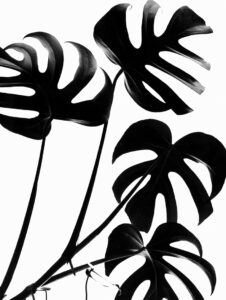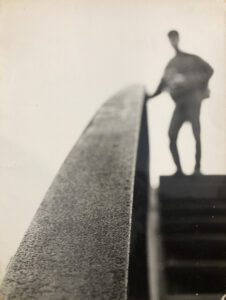In this fifth issue of Paris Photo online, we present you the first number of our edition on the historical collective Foto Cine Clube Bandeirante (FCCB), which has become a benchmark for avant-garde photography in Brazil and is, however, still widely unknown in Europe and North America. Their photographs are characterized by a constant search for new visual languages and are framed in the context of growing industrialization and creative fervour of the Brazilian post-war period. The originality and boldness of this group, comprised essentially of amateur photographers, will be seen for the first time outside of Brazil in the exhibition Fotoclubismo: Brazilian Modernist Photography, 1946-1964, which the MoMA will hold from March to June 2021.
RocioSantaCruz works actively with the family archive of several artists of the FCCB, among them Marcel Giró, Germán Lorca and Rubens Teixeira Scavone. Along with Giró’s nephew, Toni Ricart, RocioSantaCruz is responsible for the unprecedented discovery of the oeuvre of Palmira Puig-Giró, one of the few women who were part of the FCCB and whose work we included in our second issue of Paris Photo online. The commitment of RocioSantaCruz with the dissemination of the FCCB has granted it worldwide recognition as a referent in the study of Fotoclubismo. Here, we share with you the work of Marcel Giró.

Marcel Giró (Badalona, 1912 – Barcelona, 2011)
Marcel Giró arrived in São Paulo in 1948 with his wife, the photographer Palmira Puig-Giró. Giró joined the FCCB after a long career as an amateur photographer. His first photographs date from the 1930s and focus on the landscapes of the Catalan Pyrenees. They portray, above all, details of mountains and lakes, showing an early sensitivity towards abstraction, a style that would come to define his work. In 1953, Marcel and Palmira opened their own photographic studio, Estúdio Giró. Giró thus established himself as a professional photographer and began a productive career as a pioneer in advertising photography. After Palmira’s death in 1978, Marcel put down his camera almost completely.
Giró’s work stems from a precise and innovative gaze. His photographs show a recurrent interest in geometric figures, chiaroscuro and sharp contrasts. Taking his eloquent play of light and shadow to an extreme level, Giró articulated his own photographic syntax, a new aesthetic regime which allowed him to exceed the limits of representation and signification.

His work has been included in different international collections, such as in MoMA (New York), Museu de Arte de São Paulo (MASP), Itaú Cultural (São Paulo) and in the Museu Nacional d’Art de Catalunya (MNAC, Barcelona), among others